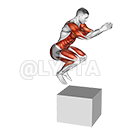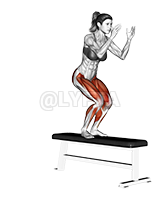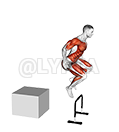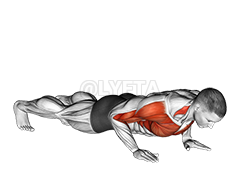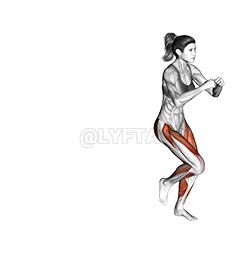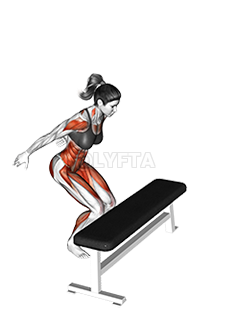
Single Leg Vertical Jump
Exercise Profile
Related Exercises:
Introduction to the Single Leg Vertical Jump
The Single Leg Vertical Jump is a dynamic exercise that focuses on building strength, power, and balance, primarily targeting the lower body muscles. It's ideal for athletes, particularly those involved in sports that require explosive movements such as basketball or volleyball. Incorporating this exercise into your routine can enhance your performance in sports, improve your overall agility, and reduce the risk of injuries by promoting better balance and muscular symmetry.
Performing the: A Step-by-Step Tutorial Single Leg Vertical Jump
- Lower yourself into a squat position on your standing leg, bending at the knee and keeping your core engaged.
- Propel yourself upwards, pushing off with your standing leg and using your arms for additional momentum.
- At the peak of your jump, extend your body fully and then allow yourself to land softly, absorbing the impact with your standing leg.
- Reset to the initial position and repeat the exercise for the desired number of repetitions before switching to the other leg.
Tips for Performing Single Leg Vertical Jump
- **Correct Form and Technique:** The correct form is essential to perform the jump effectively and avoid injury. Stand on one leg, bend your knee slightly, swing your arms back, and then swing them forward as you jump straight up. Land softly on the same foot, bending your knee to absorb the impact. A common mistake is landing hard or on a straight leg, which can lead to knee or ankle injuries.
- **Use Your Arms:** Many people forget to use their arms when doing this exercise. Swinging your arms can add momentum and help you jump higher. Make sure to swing them up as you jump, and bring them back down as you land.
- **Start
Single Leg Vertical Jump FAQs
Can beginners do the Single Leg Vertical Jump?
Yes, beginners can do the Single Leg Vertical Jump exercise, but it's important to start with a lower intensity and gradually increase it over time. As with any exercise, proper form and technique are crucial to prevent injury. It may be beneficial for beginners to start with two-legged jumps or other lower body exercises to build strength and balance before moving on to single leg jumps. Always remember to warm up before starting any exercise routine.
What are common variations of the Single Leg Vertical Jump?
- Single Leg Broad Jump: Instead of jumping vertically, this variation involves jumping forward as far as possible on one leg.
- Single Leg Tuck Jump: In this variation, the athlete jumps vertically and tucks their knee into their chest mid-air.
- Single Leg Depth Jump: This involves jumping off a box or elevated surface with one leg, then immediately jumping vertically upon landing.
- Single Leg Vertical Jump with Medicine Ball: This variation adds an upper body component by holding a medicine ball above the head during the jump.
What are good complementing exercises for the Single Leg Vertical Jump?
- Plyometric lunges are another great exercise that complements Single Leg Vertical Jump as they enhance explosive power and balance, both of which are crucial for a successful vertical jump.
- Box jumps are also beneficial because they target the same muscle groups as the Single Leg Vertical Jump, while also improving your explosive power and coordination, making your single leg jumps more efficient and powerful.
Related keywords for Single Leg Vertical Jump
- Single Leg Jump Workout
- Bodyweight Plyometric Training
- One Leg Vertical Jump Exercise
- Plyometric Single Leg Jump
- Bodyweight Leg Exercise
- Vertical Jump Training
- Single Leg Plyometrics Workout
- Single Leg Bodyweight Jump
- Plyometric Leg Training
- One-legged Vertical Jump Exercise
